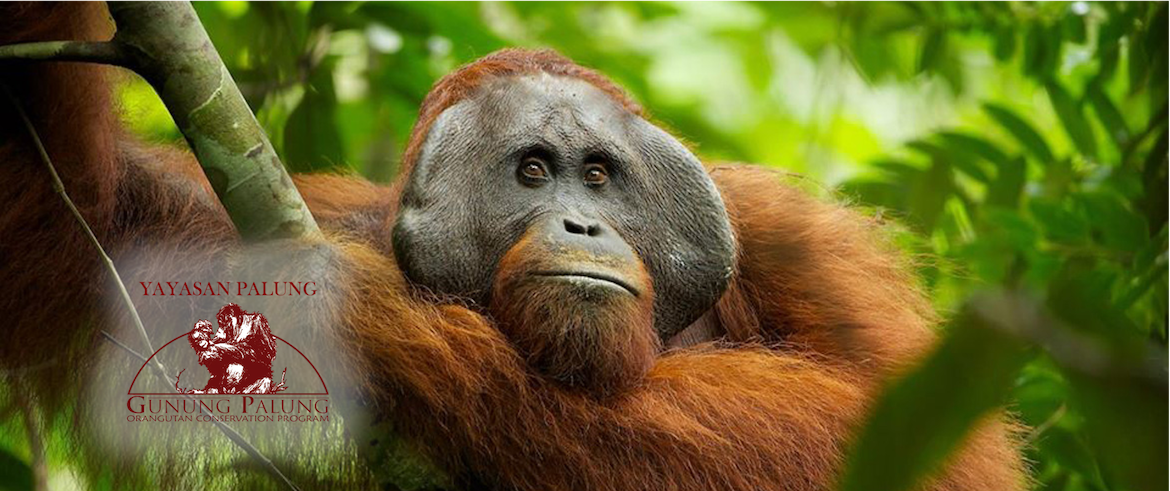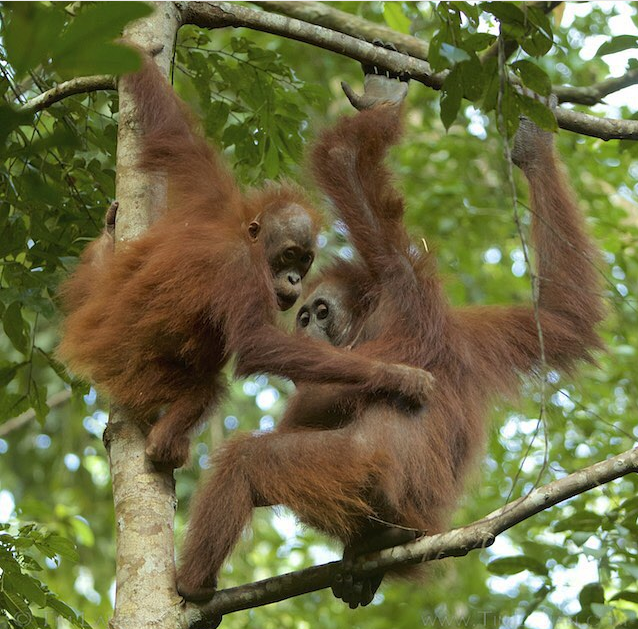By Amy Scott, Boston University Ph.D. Student
The trek to Gunung Palung entails a 13 km hike after a bumpy 1.5 hour bus ride, but my trip to the forest started long before that. I began preparing for the field long before I left the US, before island-hopping in Indonesia to collect permits and getting permission to enter Gunung Palung National Park and even before the 30-hour flight from the US to Jakarta. Getting a research permit in Indonesia is a very complicated process, so I began applying for governmental permission to conduct research in GP seven months before I entered Indonesia. It was disheartening to be confronted by delays in the long permit process, but while waiting I kept reminding myself that it would all be worth it when I finally got to see the orangutans.
As a graduate student, it is easy to get caught up in the day-to-day deadlines and details of taking classes, and lose sight of your big picture goals. The year before I went to the field, I spent most of my weekends reading academic literature on orangutan behavior. While I enjoy learning and reading about orangutan behavioral ecology, it can get tedious, especially when you aren”t in the field to observe the animals directly. Through it all I had to remind myself that all the hours of study would be worth it when I finally got to collect data toward my own research project! Finally, in early July, I received my research visa, and after completing the permitting process in Jakarta, then Pontianak, then Ketapang, I hopped on that 1.5-hour bus ride and made the 13-kilometer hike up to Gunung Palung.
My first full day at the Cabang Panti Research Site was spent searching, unsuccessfully, for orangutans, and on the second day I woke up at 3 AM to go out on a follow with the field assistants. Waking up that early can be rough, but my first encounter with a wild orangutan was well worth it. At first, all I could see were leaves moving, and then I saw a hairy, dark blob in the canopy above me. It wasn”t until the mother and juvenile pair, Beth and Benny, settled in to eat that I got my first good look at them. It was amazing. One of the things that amazed me the most that day was the way that orangutans move through the forest, pulling a tree toward them, clambering on to it, and riding the momentum from the bent tree to reach the next. While everything I saw that day was new and exciting for me, a few orangutan behaviors stood out as particularly fascinating: Beth eating termites, Benny watching his mother eat cambium that he was not yet capable of foraging, Beth using her body as a bridge to allow Benny to cross a gap between two trees, and Beth bending the branches of trees to make a night nest. It was an exhausting day, but very rewarding.







